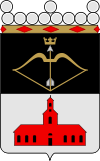Kuopio
| Kuopio | |||
| — City — | |||
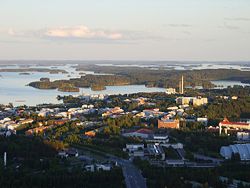 |
|||
|
|||
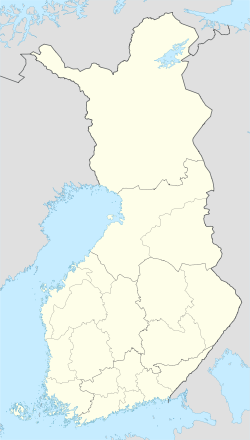 Kuopio
|
|||
| Coordinates: | |||
| Country | Finland | ||
|---|---|---|---|
| Province | Eastern Finland | ||
| Region | Northern Savonia | ||
| Settled | 1653 | ||
| Charter | 1775 | ||
| Area | |||
| - Total | 1,730 km² (668 sq mi) | ||
| Population | |||
| - Total | 91,000 | ||
| - Density | 52.6/km² (136.2/sq mi) | ||
| Time zone | EET (UTC+2) | ||
| - Summer (DST) | EEST (UTC+3) | ||
| Website: http://www.kuopio.fi | |||
Kuopio is a Finnish city and municipality located in the province of Eastern Finland and the region of Northern Savonia. A population of 91,000 makes it the eighth biggest city in the country. The city has a total area of 1,730 km², of which 805 km² is water and half forest. The population density is only 52 inhabitants/km², but the center of the city is populated very densely, even comparable to the Helsinki metropolitan area. The population of the entire Kuopio region is 119,472 (source: Kuopion Kaupunkilehti, 19 March 2008, bottom of page 4).
Kuopio was founded in 1653 by Governor Peter Brahe, but the official date is recognized as November 17, 1775, when King Gustav III of Sweden ordered the establishment of the city of Kuopio. The municipality of Vehmersalmi joined the city of Kuopio on January 1, 2005 like the municipality of Kuopion maalaiskunta in 1969 and the municipality of Riistavesi in 1973.
The city is surrounded by lake Kallavesi, and several parts of it are built on islands. Kuopio is known for its association with a national delicacy, Finnish fish pastry (Kalakukko), and the dialect of Savo, as well as the hill of Puijo and the Puijo tower. Besides being a very popular outdoor recreation area, Puijo serves also as a stage for a yearly World Cup ski jumping competition.
Transport connections to Kuopio include Pendolino trains and air service from Finnair and Blue1.
The city is a finalist to host the inaugural edition of the 2012 Winter Youth Olympics.
Contents |
Education and business
Kuopio has always been a school town. Some of the first schools offering education in Finnish (such as the School for the Blind in 1871, and the Trade School in 1887) were established in Kuopio. Currently the most important institutions are the University of Kuopio, the Savonia University of Applied Sciences, Vocational College of Northern Savonia and the Kuopio department of the Sibelius Academy.
Kuopio is known as a strong center of health (it has the biggest yearly enrollment rate of medical students in Finland), pharmacy, environment, food & nutrition (all legalized Clinical and Public Health Nutritionists in Finland graduate from the University of Kuopio), safety (education in Emergency Services is centered in Kuopio [1]) and welfare professions, as the major organisations University of Kuopio, Savonia University of Applied Sciences and Technology Centre Teknia are particularly oriented to those areas.

There are about 3,800 enterprises in Kuopio, of which approximately 150 are export companies. These provide nearly 40,000 jobs. [2] As of January 1 2006, the biggest employers of the city were:
- Town of Kuopio (5 977 employees),
- Kuopio University Hospital (KUH; in Finnish KYS) (4 166),
- University of Kuopio (1 595),
- Savo Consortium for Education (636),
- Niuvanniemi hospital (596),
- PeeÄssä Coop (572),
- Finland Post Group (527),
- ISS (478) and
- Atria PLC (350).
People and culture
Kuopio is known as the cultural center of Eastern Finland. A wide range of musical (from kindergarten to doctorate-level studies) and dance education is available and the cultural life is active. Notable events include ANTI - Contemporary Art Festival, Kuopio Dance Festival, Kuopio Rockcock, Kuopio Wine Festival and Finland Ice Marathon. A notable place, however, to enjoy the local flavor of Kuopio life and food is Sampo, a fish restaurant loved by local and tourist as well.
In Finland the inhabitants of Kuopio have a special reputation: they are known as jovial and verbally joking. Within the Savo culture, the onus is placed on the listener to interpret the story. People of Kuopio region and Eastern Finland have always had many health problems and the mortality has been higher than on an average in Finland. Because of this, Eastern Finland has been a sweetspot for Public Health studies. The North Karelia Project by the University of Kuopio in the 1970s was one of its first steps towards world class research.
During the 2000s, Kuopio has placed very well in a number image, popularity and city-attractiveness surveys. In 2007 it was placed third, behind Tampere and Oulu.

Kuopio is the seat of the Finnish Orthodox Church. This is an autonomous cell within the autocephalous jurisdiction of the Patriarchate of Constantinople. It is the only mainstream Orthodox faction to celebrate Easter on the Latin date. The late Archbishop Paul had been successful in producing literature of popular theology.
Notable persons
- Juhani Aho
- Martti Ahtisaari
- Minna Canth
- Pekka Halonen
- Marco Hietala
- Zachary Hietala
- Janne Tolsa aka. (RunQ)
- Olli Jokinen
- Sami Kapanen
- Hannes Kolehmainen
- Lasse Lehtinen
- Paavo Lipponen
- Pertti "Spede" Pasanen
- Wille Riekkinen
- Juho Rissanen
- Aarno Ruusuvuori -architect
- Aulis Rytkönen
- Tuomo Saikkonen - musician
- Johan Vilhelm Snellman
- Kimmo Timonen
- Fridolf Weurlander
- Brothers von Wright, Magnus, Wilhelm and Ferdinand
- Veera Hallman

Sports in Kuopio
Kuopio is bidding for the 2012 Winter Youth Olympics, a youth sports festival in the tradition of the Olympics. It became a finalist (along with Innsbruck, Austria) in November 2008. Kuopio's image as a small city with a large University and many active young people may exemplify the model of what the International Olympic Committee is seeking for the Games.[1]
- KalPa (ice hockey)
- KuPS (football)
- Puijon Hiihtoseura (skiing, ski jumping, nordic combined, biathlon)
- Puijon Pesis (pesäpallo)
- Finland Ice Marathon
- Kuopio Steelers (american football)
Sister Cities
 Győr, Hungary
Győr, Hungary
 Minneapolis, Minnesota USA
Minneapolis, Minnesota USA Winnipeg, Manitoba, Canada
Winnipeg, Manitoba, Canada Jönköping, Sweden
Jönköping, Sweden Bodø, Norway
Bodø, Norway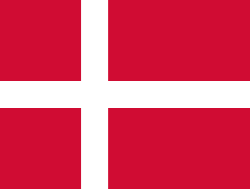 Svendborg, Denmark
Svendborg, Denmark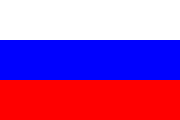 Pitkyaranta, Russia
Pitkyaranta, Russia Pskov, Russia
Pskov, Russia Castrop-Rauxel, Germany
Castrop-Rauxel, Germany Gera, Germany
Gera, Germany Besançon, France
Besançon, France Opole, Poland
Opole, Poland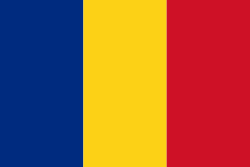 Craiova, Romania
Craiova, Romania
References
External links
- Kuopio - Official site of city's government (Finnish) (Swedish) (English) (German)
- KuopioInfo - Various resources about different areas of interest related to Kuopio History and Life (Finnish) (English) (German) (Russian) (Chinese)
- Savonia University of Applied Sciences (English)
- University of Kuopio (English)
- Technology Centre Teknia Ltd. (Finnish) (English) (Chinese)
- Invest in Kuopio -factsheet (English)
- Satellite picture by Google Maps
